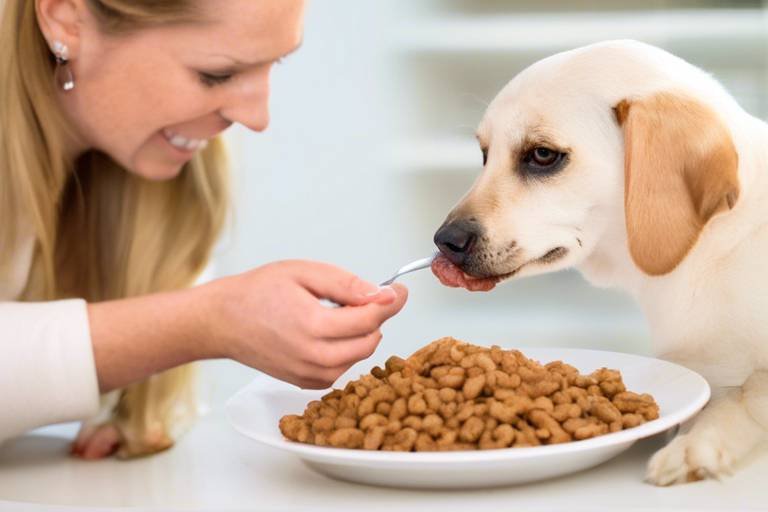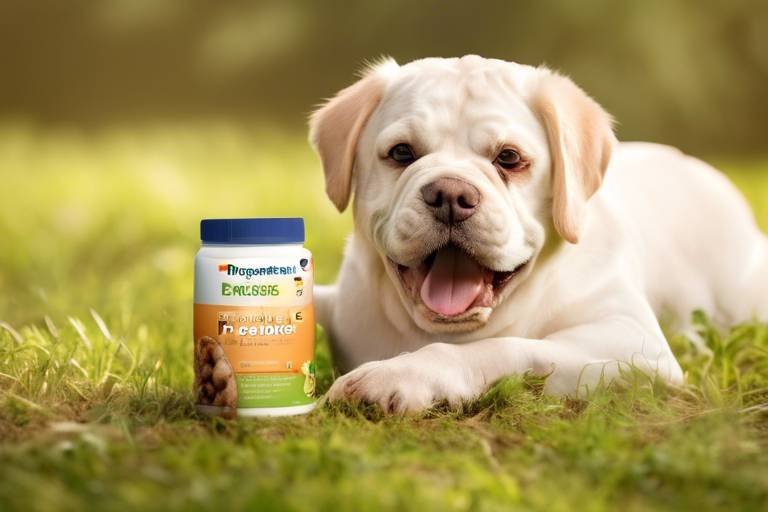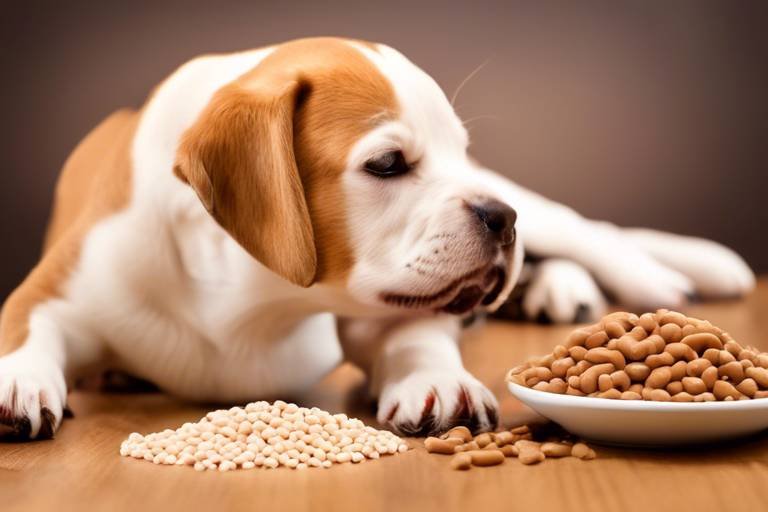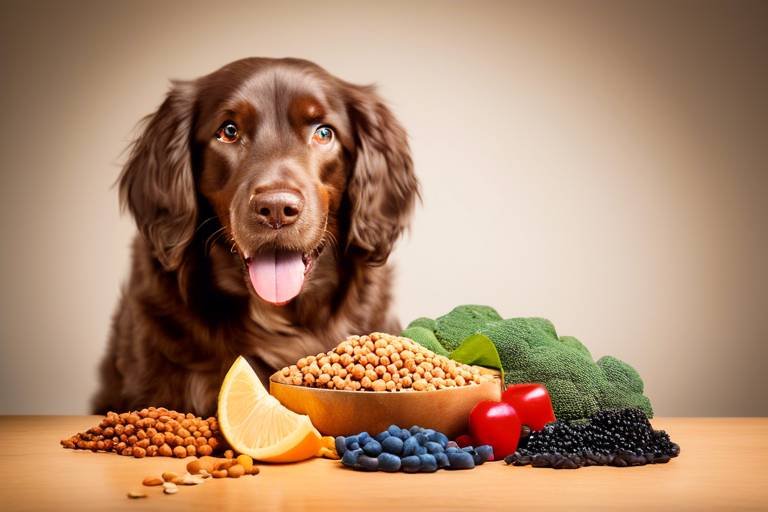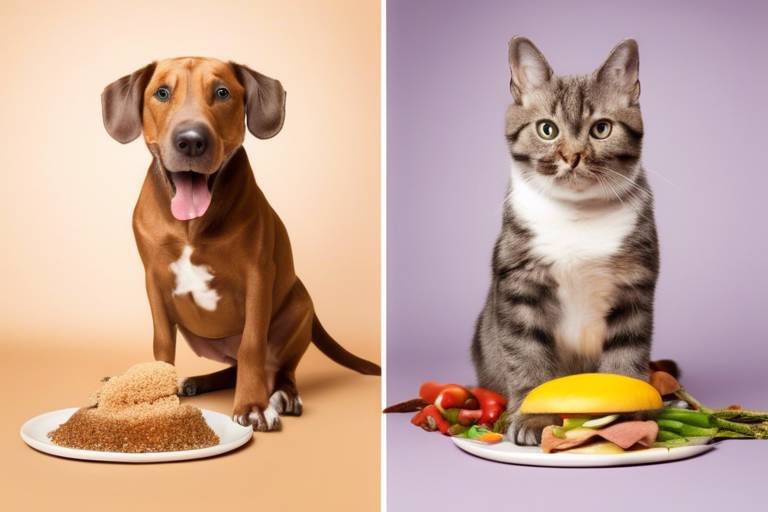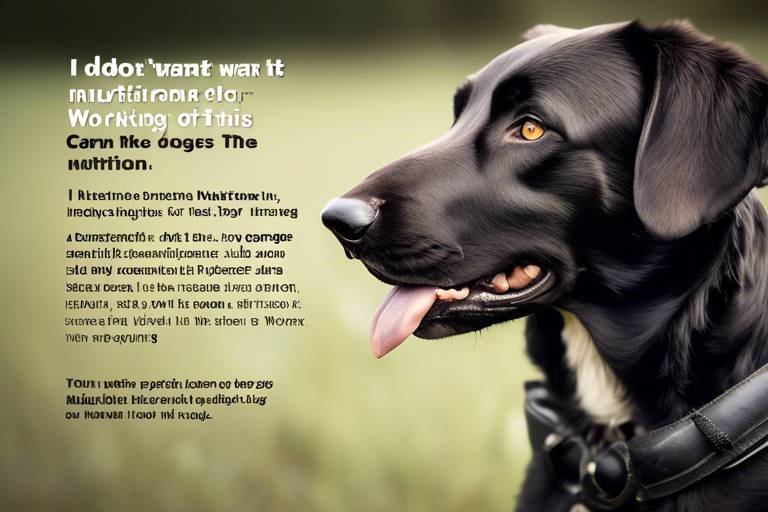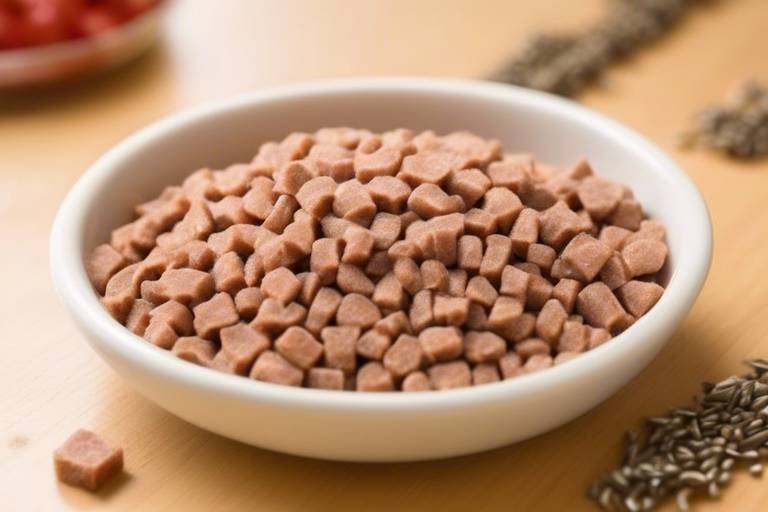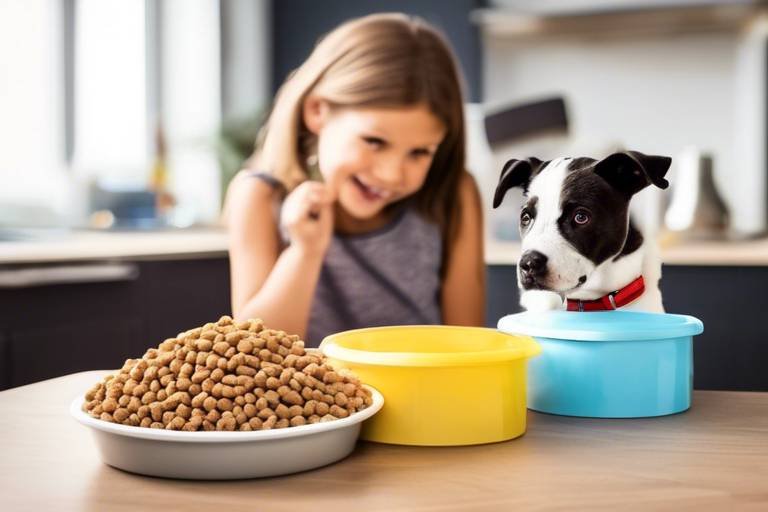How to Help Your Pet Adjust to New Food
Transitioning your pet to a new food can feel like navigating through a maze. You want to ensure that your furry friend is not only getting the nutrition they need but also enjoying their meals. After all, a happy pet is a healthy pet! But how do you make this change without causing stress or digestive issues? The key lies in understanding the process and being mindful of your pet's unique needs. Just like humans, pets can be picky eaters and may take time to adjust to new tastes and textures. In this article, we will explore essential tips and strategies to help your beloved companion smoothly transition to their new diet.
When it comes to your pet's health, the importance of a proper food transition cannot be overstated. A gradual approach minimizes digestive issues and helps pets adapt to new flavors and nutrients effectively. Think of it like moving to a new city; you wouldn't jump straight into a new lifestyle without exploring it first, right? Similarly, your pet needs time to adjust to the new food. This transition period is crucial for ensuring they receive the best nutrition possible, which can lead to improved energy levels, better coat condition, and overall happiness.
So, how do you know when it's time for a food change? Recognizing the signs that your pet requires a different diet is essential. Common indicators include:
- Changes in energy levels
- Coat condition that appears dull or unhealthy
- Allergies or skin irritations
- Digestive problems such as vomiting or diarrhea
Allergies and sensitivities in pets can manifest as skin irritations or gastrointestinal issues. If your pet is scratching more than usual or has an upset stomach after meals, it could be a sign of food allergies. Identifying these problems can guide you in selecting a suitable new food that meets your pet's specific dietary needs. Just like humans, pets can develop allergies to certain ingredients, and being aware of these can make a world of difference in their comfort and health.
Certain ingredients are known to be common allergens for pets. These include:
- Grains (like wheat and corn)
- Beef
- Chicken
Before making any dietary changes, consulting with your veterinarian is crucial. They can provide personalized advice based on your pet's health history and specific needs. Think of your vet as your pet's nutrition coach; they know what works best for your furry friend and can help you navigate the often confusing world of pet food.
Implementing gradual transition techniques is key to avoiding digestive upset. Slowly mixing the new food with the old over several days allows your pet's digestive system to adjust comfortably. Start by mixing 25% of the new food with 75% of the old food for the first few days. Then, gradually increase the new food ratio. This method is like easing into a cold pool; you wouldn't want to jump in all at once!
Selecting the appropriate new food for your pet involves considering their age, breed, and health requirements. Researching different brands and formulations ensures you make an informed decision that supports their overall well-being. Remember, not all pet foods are created equal. Just like you would read reviews before trying a new restaurant, do your homework on pet food brands to find the best fit for your companion.
When choosing new food, evaluating its nutritional content is essential. Look for high-quality ingredients, appropriate protein levels, and essential vitamins and minerals to meet your pet's dietary needs. A good rule of thumb is to choose foods that list meat as the first ingredient and avoid those with fillers or artificial additives. Your pet deserves the best, and quality food can lead to a longer, healthier life.
Carefully reading labels and understanding ingredient lists helps you make informed choices. Familiarizing yourself with pet food regulations can aid in selecting safe and nutritious options for your pet. Don't hesitate to ask questions or seek clarification on any ingredient you don't understand. After all, you're the guardian of your pet's health!
After transitioning to new food, monitoring your pet's response is vital. Observing their behavior, digestion, and overall health can help identify any adverse reactions or adjustments needed in their diet. Keep an eye on their energy levels, coat condition, and bathroom habits. If something seems off, don’t hesitate to consult your vet. Remember, you know your pet better than anyone else!
Q: How long should I take to transition my pet to new food?
A: A gradual transition over 7-10 days is typically recommended to avoid digestive upset.
Q: What if my pet refuses to eat the new food?
A: If your pet is hesitant, try mixing a small amount of their favorite treat or wet food with the new food to entice them.
Q: Can I switch my pet's food too often?
A: Yes, frequent changes can lead to digestive issues. It's best to stick with one food unless advised otherwise by your veterinarian.
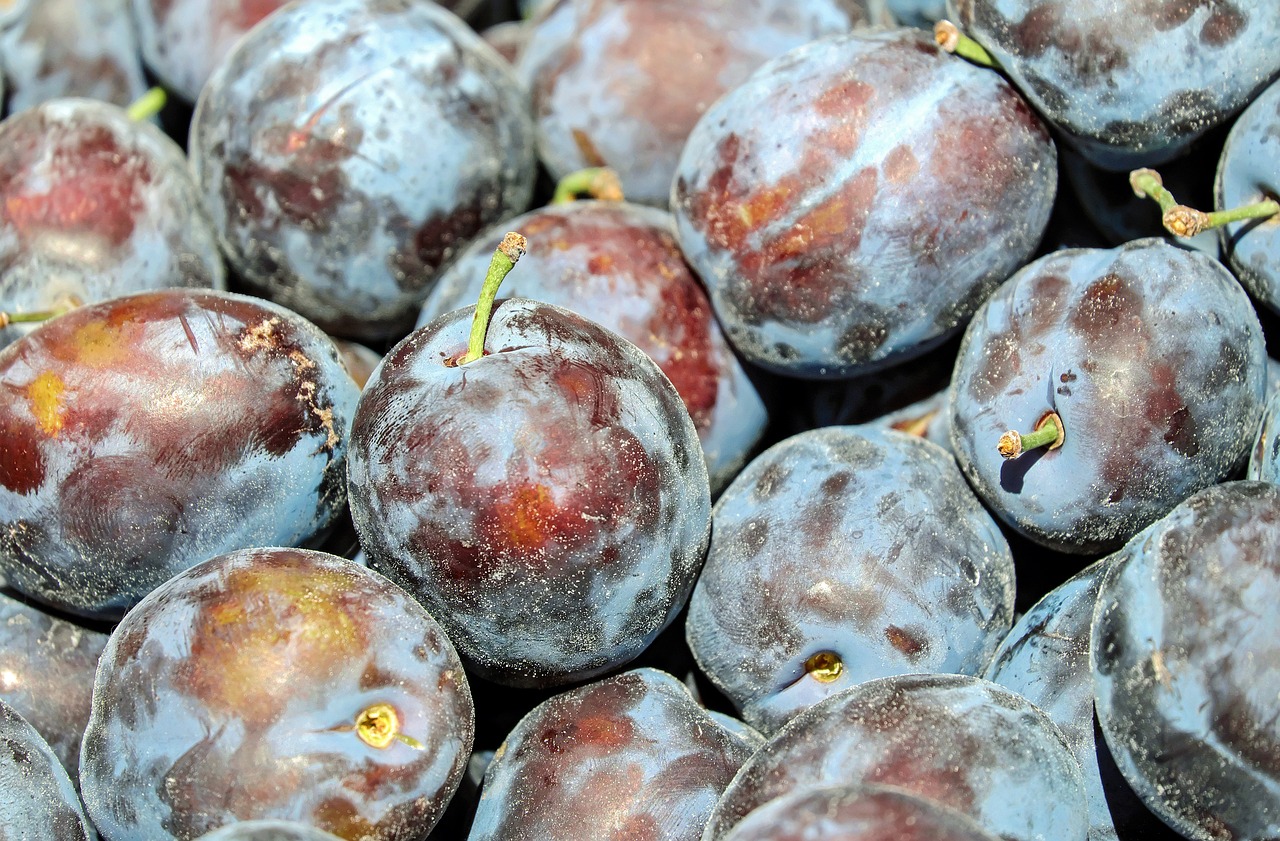
Understanding the Importance of Food Transition
Transitioning your pet to a new food is not just a matter of changing brands or flavors; it’s a critical part of maintaining your furry friend’s health and happiness. Think of it as a journey rather than a destination. Just like humans, pets can experience digestive discomfort when faced with sudden changes in their diet. A gradual transition allows their digestive system to adapt smoothly, minimizing the risk of gastrointestinal issues such as diarrhea or vomiting. Imagine trying to change your favorite meal overnight—your taste buds and stomach would likely protest! Similarly, your pet needs time to adjust to new flavors and nutrients.
Moreover, a well-planned transition ensures that your pet receives the best nutrition possible. Different foods come with varying levels of proteins, fats, and vitamins, and suddenly switching can lead to deficiencies or excesses that could harm your pet’s health. By taking the time to transition, you are essentially giving your pet's body a chance to acclimate to the new food's unique composition. This is particularly important for pets with sensitive stomachs or those who have been on the same diet for a long time.
To make the transition smoother, you might consider the following steps:
- Start Slow: Begin by mixing a small amount of the new food with the old food, gradually increasing the new food's proportion over a week or two.
- Monitor Digestive Health: Keep an eye on your pet’s stool consistency and overall demeanor. If you notice any signs of distress, it may be time to slow down the transition.
- Stay Consistent: Try to feed your pet at the same times each day to create a routine that helps them adjust.
In summary, understanding the importance of food transition is essential for your pet's overall well-being. It’s not just about what goes into their bowl; it’s about ensuring they can digest and benefit from their food without discomfort. By approaching this change thoughtfully, you're setting the stage for a happy and healthy life for your beloved companion.

Signs Your Pet Needs a Food Change
As a loving pet owner, it's essential to be attuned to the subtle cues your furry friend may be giving you. Just like humans, pets can experience changes in their dietary needs over time. If you notice your pet acting a bit off, it could be a sign that it's time for a food change. But what exactly should you look for? Let's dive into some common indicators that your pet might need a new diet.
One of the most noticeable signs is a change in your pet's energy levels. If your usually playful pup suddenly seems lethargic or your kitty is less inclined to chase that elusive feather toy, it might be time to reassess their food. Similarly, if you notice that their coat is looking dull or unkempt, it could indicate a deficiency in essential nutrients. A shiny, healthy coat is often a reflection of a balanced diet, so keep an eye on those furry locks!
Digestive issues are another red flag. If your pet is experiencing frequent vomiting, diarrhea, or constipation, it could signal that their current food isn't agreeing with them. In such cases, a gradual transition to a new food may be necessary to alleviate these problems. Additionally, watch for any signs of allergies or sensitivities, such as:
- Itchy skin or excessive scratching
- Red or inflamed skin
- Ear infections or ear scratching
- Gastrointestinal upset, including gas or bloating
These symptoms can often be linked to common food allergens, which leads us to the next point. If your pet has been diagnosed with allergies or sensitivities, it’s crucial to identify the problematic ingredients in their current food. Common allergens include grains, beef, and chicken, so be sure to read labels carefully when selecting a new diet.
Ultimately, your pet's health and happiness are paramount. If you suspect that their food isn't meeting their needs, don’t hesitate to consult with your veterinarian. They can provide valuable insights and help you navigate the often confusing world of pet nutrition.
Q: How long should I monitor my pet before deciding to change their food?
A: It's advisable to observe your pet for at least a week. If you notice persistent issues such as lethargy or digestive problems, consider a food change.
Q: Can I change my pet's food suddenly?
A: It's best to transition gradually to avoid digestive upset. Mix the new food with the old food over several days.
Q: Should I consult a vet before changing my pet's food?
A: Yes, consulting with your veterinarian is crucial, especially if your pet has specific health issues or dietary needs.
Identifying Allergies and Sensitivities
When it comes to our beloved pets, their health and happiness are our top priorities. One of the hidden challenges many pet owners face is identifying allergies and sensitivities that can affect their furry friends. Just like humans, pets can have adverse reactions to certain foods, which can lead to discomfort and health issues. So, how do you recognize these problems? First, it’s essential to be observant. Pay close attention to changes in your pet's behavior, skin condition, and digestion. For instance, if your dog starts scratching more than usual, or if your cat has frequent stomach upsets, these could be signs of food allergies.
Allergies in pets can manifest in various ways, including:
- Skin Irritations: This can include redness, itching, and rashes that may appear on the skin, often around the ears, paws, or belly.
- Gastrointestinal Issues: Symptoms like vomiting, diarrhea, or excessive gas can indicate that your pet is not tolerating their food well.
- Behavioral Changes: If your pet seems more lethargic or irritable than usual, it might be worth investigating their diet.
Identifying the specific ingredients that cause these reactions is crucial. Common food allergens include grains, beef, chicken, and dairy. However, every pet is unique, and what bothers one might not affect another. Keeping a food diary can be a helpful strategy. Note what your pet eats and any symptoms that arise. This record can provide valuable insights for you and your veterinarian when determining the best course of action.
Additionally, consider conducting an elimination diet under your vet's guidance. This involves removing potential allergens from your pet's diet for several weeks and then gradually reintroducing them one at a time. This method can help pinpoint the exact ingredient causing the problem. Remember, it's not just about finding a new food; it's about ensuring your pet thrives on a diet that supports their health and well-being.
Q: How long does it take to identify food allergies in pets?
A: It can vary, but typically, a process of elimination and observation may take several weeks to a few months to accurately determine food allergies.
Q: Can I switch my pet's food without consulting a vet?
A: While it's possible to switch foods, it's always best to consult with your veterinarian, especially if you suspect allergies or sensitivities. They can provide tailored advice for your pet's specific needs.
Q: What should I do if my pet shows signs of an allergy?
A: If you notice signs of an allergy, consult your veterinarian immediately. They can help you identify the issue and recommend an appropriate diet.
Common Food Allergens
When it comes to our furry friends, food allergies can be a hidden menace, often going unnoticed until symptoms start to surface. Just like humans, pets can develop sensitivities to certain ingredients, and recognizing these common allergens is crucial for their well-being. The most frequent culprits include grains, beef, chicken, dairy, and eggs. Each of these ingredients can trigger a variety of reactions, ranging from mild to severe, and understanding them can significantly impact your pet's health.
Grains, such as wheat, corn, and soy, are often found in many commercial pet foods. While some pets tolerate grains well, others may experience digestive upset or skin irritations. This is particularly true for dogs and cats with sensitive stomachs or those predisposed to allergies. Beef and chicken, typically considered staple proteins, can also lead to allergic reactions. Symptoms may include itching, ear infections, or gastrointestinal distress. If you notice any of these signs, it might be time to evaluate your pet's diet.
Additionally, dairy products can be problematic for many pets since they often lack the enzyme needed to digest lactose. This can lead to bloating, diarrhea, and other digestive issues. Eggs, while a great source of protein, can also be a source of allergens for some pets. It's essential to monitor your pet's reactions to these foods closely, as even a small amount can trigger a response in sensitive animals.
To help you identify these common allergens, here's a quick reference table:
| Allergen | Potential Symptoms |
|---|---|
| Grains | Digestive upset, skin irritations |
| Beef | Itching, ear infections, gastrointestinal distress |
| Chicken | Itching, digestive issues, lethargy |
| Dairy | Bloating, diarrhea, gas |
| Eggs | Skin irritations, digestive issues |
By being aware of these common allergens, you can make more informed choices about your pet's diet. If you suspect that your pet is having an allergic reaction to their food, it’s always best to consult with your veterinarian. They can help you determine the best course of action and suggest alternative diets that are free from these allergens, ensuring your beloved pet remains happy and healthy.
- How can I tell if my pet has a food allergy? Look for symptoms like itching, digestive upset, or unusual behavior after eating.
- What should I do if I suspect my pet has a food allergy? Consult with your veterinarian to discuss potential dietary changes and allergy testing.
- Are there hypoallergenic pet foods available? Yes, many brands offer hypoallergenic options designed specifically for pets with sensitivities.
- How long does it take for a food allergy to develop? Food allergies can develop at any age, even if your pet has been eating the same food for years.
Consulting with Your Veterinarian
When it comes to your pet's health, there's no one better to consult than your veterinarian. They are your trusted partner in ensuring that your furry friend leads a healthy and happy life. Before making any dietary changes, it's crucial to have a conversation with them. Why? Because your vet can provide personalized advice tailored to your pet's unique health history and needs. Just like how we wouldn't change our diet without considering our health conditions, our pets deserve the same level of attention.
Your veterinarian will likely ask you a series of questions to understand your pet's current diet, lifestyle, and any health issues that may influence their nutritional requirements. This dialogue is essential because it helps them recommend the most suitable food options, considering factors like age, breed, and any existing medical conditions. For instance, if your pet has allergies or sensitivities, your vet can guide you in selecting a food that avoids common allergens.
Moreover, your veterinarian can help you create a transition plan that suits your pet's needs. They might suggest a gradual introduction of the new food, which can minimize any digestive upsets. In some cases, they may even recommend specific brands or formulations that have proven effective for pets with similar profiles. Remember, what works for one pet might not work for another, so having that professional insight is invaluable.
Lastly, don't hesitate to reach out to your veterinarian if you notice any adverse reactions after switching your pet's food. Whether it's an upset stomach, changes in behavior, or skin irritations, your vet is there to help you navigate these challenges. They can provide solutions that may include dietary adjustments or further testing to identify any underlying issues. In this way, consulting with your veterinarian is not just a step in the process; it's a vital part of ensuring your pet's health and happiness during their food transition.
- How long should I take to transition my pet to new food?
Typically, a gradual transition over 7 to 10 days is recommended. Start by mixing a small amount of the new food with the old, gradually increasing the new food while decreasing the old. - What if my pet refuses to eat the new food?
It's not uncommon for pets to be picky. If your pet refuses the new food, consult your veterinarian for alternatives or tips to make the food more appealing. - Can I mix different brands of pet food?
While mixing brands is possible, it's essential to ensure that both foods are compatible in terms of nutritional content. Always consult your veterinarian before making such changes. - What signs should I look for to ensure my pet is adjusting well?
Monitor your pet for signs like improved energy levels, a healthy coat, and normal digestion. Any adverse reactions should be addressed with your veterinarian immediately.
Gradual Transition Techniques
When it comes to helping your furry friend adjust to a new diet, are your best bet. Think of it like introducing a new friend to your pet; you wouldn't throw them together in a small room and expect them to get along immediately, right? The same principle applies to changing your pet’s food. A sudden switch can lead to digestive upset, which is the last thing you want for your beloved companion. Instead, take your time and ease them into their new meal plan.
The process typically spans about 7 to 10 days, but it can vary based on your pet's specific needs. Start by mixing a small amount of the new food with their current food. A common guideline is to use a ratio of 25% new food to 75% old food for the first few days. This allows your pet's digestive system to adapt without overwhelming it with sudden changes. As the days progress, gradually increase the proportion of the new food while decreasing the old food. Here’s a simple breakdown:
| Day | Old Food | New Food |
|---|---|---|
| 1-3 | 75% | 25% |
| 4-6 | 50% | 50% |
| 7-10 | 25% | 75% |
| After 10 Days | 0% | 100% |
Throughout this transition period, keep an eye on your pet's behavior and digestion. Are they excited about their meals? Are they having any stomach issues? Monitoring these signs is crucial. If you notice any adverse reactions, such as vomiting or diarrhea, it may be wise to slow down the transition process or consult your veterinarian. Remember, each pet is unique, and what works for one may not work for another.
Additionally, make mealtime fun! You can create a positive association with the new food by encouraging your pet during feeding times. Use a cheerful tone and offer treats or praise when they show interest in their new food. This can help reduce any anxiety they might feel about the change. Remember, patience is key. Just like a new song, they might need to hear it a few times before they start to enjoy it!
In summary, a gradual transition not only promotes better digestion but also helps your pet embrace their new food with confidence. So, take it slow, observe their reactions, and make mealtime an enjoyable experience!
- How long should I take to transition my pet to new food?
It's generally recommended to take about 7 to 10 days to transition your pet to a new food to avoid digestive issues. - What if my pet refuses to eat the new food?
If your pet is hesitant, try mixing in some of their favorite treats or wet food to make it more appealing. - Can I switch to a different food if my pet has allergies?
Yes, but it's essential to consult with your veterinarian to choose a suitable food that avoids allergens. - What signs indicate that my pet is adjusting well to the new food?
Look for improved energy levels, a shiny coat, and regular digestion as signs that your pet is adapting well.

Choosing the Right New Food
When it comes to selecting the right new food for your beloved pet, it’s not just about grabbing the first bag off the shelf. It’s a bit like choosing a new outfit; you want something that fits well and makes your pet feel good. First and foremost, consider your pet’s age, breed, and any specific health requirements they may have. Just like humans, pets have unique dietary needs based on their life stage and lifestyle. For instance, a sprightly puppy will have different nutritional requirements compared to a senior dog.
Moreover, it’s essential to do some research on different brands and formulations. Not all pet foods are created equal, and some may contain fillers or low-quality ingredients that could do more harm than good. Look for products that list high-quality protein sources as the first ingredient, and ensure they contain essential vitamins and minerals. This is crucial for maintaining your pet’s energy levels and overall health.
In addition to the ingredients, you should also pay attention to the feeding guidelines. These can vary significantly between brands and types of food. For example, some foods may be more calorie-dense than others, meaning you’ll need to adjust the portion size accordingly. It’s a bit like adjusting your diet if you switch from a salad to a hearty pasta dish; you wouldn’t want to overindulge!
To help you make an informed decision, here’s a simple table comparing key factors to consider when choosing new pet food:
| Factor | Importance | What to Look For |
|---|---|---|
| Age | Different life stages require different nutrients | Puppy, Adult, Senior formulas |
| Breed | Some breeds have specific dietary needs | Breed-specific formulas |
| Health Requirements | Special diets may be necessary for certain conditions | Grain-free, hypoallergenic, etc. |
| Nutritional Content | Ensures your pet gets balanced nutrition | High-quality proteins, vitamins, and minerals |
Lastly, don’t forget to read the labels carefully. Understanding the ingredient list can help you avoid potential allergens and ensure you’re choosing safe and nutritious options. It’s like reading the fine print before signing a contract; you want to know exactly what you’re getting into. Familiarizing yourself with pet food regulations can also aid in spotting any red flags. Remember, your pet relies on you to make the best choices for their health and happiness!
Evaluating Nutritional Content
This article provides essential tips and strategies for pet owners to facilitate a smooth transition to new food for their furry companions, ensuring a healthy and happy adjustment period.
Transitioning to new food is crucial for your pet's health. A gradual approach minimizes digestive issues and helps pets adapt to new flavors and nutrients effectively, ensuring they receive the best nutrition possible.
Recognizing the signs that your pet requires a different diet is essential. Common indicators include changes in energy levels, coat condition, allergies, or digestive problems, which can signal the need for a food transition.
Allergies and sensitivities in pets can manifest as skin irritations or gastrointestinal issues. Identifying these problems can guide you in selecting a suitable new food that meets your pet's specific dietary needs.
Certain ingredients, such as grains, beef, and chicken, are common allergens for pets. Understanding these can help you choose a new food that avoids these problematic components, ensuring your pet's comfort and health.
Before making any dietary changes, consulting with your veterinarian is crucial. They can provide personalized advice based on your pet's health history and specific needs, ensuring a safe transition to new food.
Implementing gradual transition techniques is key to avoiding digestive upset. Slowly mixing the new food with the old over several days allows your pet's digestive system to adjust comfortably.
Selecting the appropriate new food for your pet involves considering their age, breed, and health requirements. Researching different brands and formulations ensures you make an informed decision that supports their overall well-being.
When it comes to your pet's diet, is not just important; it's essential. Think of it as reading the fine print on a contract; you want to know exactly what you're signing up for. The nutritional content of pet food can significantly impact your furry friend's health and well-being. So, what should you look for?
First, focus on high-quality ingredients. Look for real meat as the primary ingredient, as it provides the necessary protein for muscle development and energy. If the food lists vague terms like "meat by-products," it might be a red flag. You want to see specific sources of protein, such as chicken, beef, or fish, listed clearly.
Next, consider the balance of nutrients. A good pet food should contain:
- Protein: Essential for growth, repair, and energy.
- Fats: Necessary for healthy skin and coat, and they also provide energy.
- Carbohydrates: A source of energy that aids in digestion.
- Vitamins and Minerals: Important for overall health, immune function, and bone strength.
To make it easier to compare different brands, you might find it helpful to create a simple table to evaluate their nutritional profiles. For example:
| Brand | Protein (%) | Fat (%) | Fiber (%) | Key Ingredients |
|---|---|---|---|---|
| Brand A | 30 | 15 | 4 | Chicken, Brown Rice, Peas |
| Brand B | 25 | 10 | 5 | Beef, Sweet Potatoes, Carrots |
By comparing these factors, you can make a more informed choice about the best food for your pet's specific needs.
In conclusion, evaluating nutritional content is like being a detective for your pet's health. The right food can mean the difference between a vibrant, energetic pet and one that struggles with health issues. So take your time, do your research, and choose wisely!
After transitioning to new food, monitoring your pet's response is vital. Observing their behavior, digestion, and overall health can help identify any adverse reactions or adjustments needed in their diet.
- How long should I take to transition my pet to new food? It's generally recommended to take about 7 to 10 days for a complete transition.
- What should I do if my pet refuses to eat the new food? Try mixing it with their favorite treats or consult your vet for alternatives.
- Can I feed my pet homemade food instead of commercial food? Yes, but ensure it meets all their nutritional needs; consult your vet for guidance.
Reading Labels and Ingredients
When it comes to selecting the right food for your furry friend, understanding how to read labels and ingredients is crucial. Just like you wouldn’t blindly trust a menu at a restaurant without knowing what’s in your meal, the same goes for your pet’s food. The label can tell you a lot about the quality and nutritional value of the food, helping you make an informed choice that supports your pet's health and well-being.
First and foremost, look for the ingredients list. Ingredients are typically listed in descending order by weight, meaning the first few items are the most significant components of the food. Ideally, you want to see high-quality protein sources, such as chicken, beef, or fish, listed at the top. Avoid foods that list vague terms like "meat by-products" or "animal fat," as these can be lower-quality ingredients that might not provide the best nutrition for your pet.
Next, check for any additives and preservatives. While some preservatives are necessary for keeping food fresh, look for natural options like tocopherols (vitamin E) rather than artificial ones. It's also wise to avoid foods with excessive fillers like corn and soy, which may not provide much nutritional benefit and can lead to allergies or sensitivities.
Another essential aspect to consider is the guaranteed analysis section, which provides information about the minimum percentages of crude protein and fat, as well as the maximum percentages of fiber and moisture. This can help you assess whether the food meets your pet's dietary needs. For example, if you have an active dog, they might require a higher protein content to support their energy levels.
| Component | What to Look For | Avoid |
|---|---|---|
| Protein | High-quality animal sources (e.g., chicken, fish) | Meat by-products, vague terms |
| Additives | Natural preservatives (e.g., tocopherols) | Artificial preservatives (e.g., BHA, BHT) |
| Fillers | Whole grains (if not allergic) | Corn, soy, and other low-nutrition fillers |
Lastly, understanding pet food regulations can also be beneficial. Familiarize yourself with terms like "complete and balanced," which means the food meets the nutritional levels established by the AAFCO (Association of American Feed Control Officials). This ensures that the food is not only safe but also provides the necessary nutrients your pet needs to thrive.
In conclusion, reading labels and understanding ingredients is not just about making a purchase; it's about ensuring your pet receives the best possible nutrition. By taking the time to scrutinize what goes into their food, you can help pave the way for a healthier, happier life for your beloved companion.
- How can I tell if my pet is allergic to a specific ingredient?
Watch for symptoms like itching, digestive upset, or unusual behavior. If you suspect an allergy, consult your veterinarian. - Is it necessary to consult a vet before changing my pet's food?
Yes, especially if your pet has existing health issues or dietary restrictions. - How long should I gradually transition my pet to a new food?
A typical transition period is about 7 to 10 days, mixing increasing amounts of the new food with the old.

Monitoring Your Pet's Response
Once you've made the transition to new food, it's crucial to keep a close eye on your furry friend's response. Just like humans, pets can react differently to dietary changes, and being vigilant can help you catch any potential issues early. Start by observing your pet's behavior and mood. Are they more energetic? Do they seem to enjoy their meals? These are positive signs that they are adjusting well. On the flip side, if your pet appears lethargic, disinterested in food, or shows signs of discomfort, it might be a red flag.
One of the best ways to monitor your pet's response is to keep track of their digestion. Pay attention to their stool consistency and frequency. A sudden change in stool quality—whether it's diarrhea, constipation, or anything in between—can indicate that the new food isn’t agreeing with them. If you notice any abnormalities, it’s wise to consult your veterinarian. They can help determine if the new food is suitable or if adjustments are necessary.
Additionally, watch for any signs of allergies or sensitivities. Symptoms such as itching, excessive scratching, or gastrointestinal upset can indicate that your pet may be allergic to an ingredient in the new food. Common allergens include grains, beef, and chicken, so if you suspect a food allergy, consider switching to a limited-ingredient diet or a hypoallergenic formula.
Another important aspect of monitoring is to assess your pet’s overall health. Regular vet check-ups can help ensure that the new diet is meeting their nutritional needs. You might want to keep a journal of your pet's reactions, noting any changes in their behavior, energy levels, and physical condition. This can be incredibly helpful for both you and your veterinarian in making informed decisions about your pet's diet.
In summary, monitoring your pet's response after a food transition is essential for their health and happiness. By being observant and proactive, you can ensure that they thrive on their new diet. Remember, the goal is to create a balanced and enjoyable eating experience for your beloved companion.
- How long should I monitor my pet after changing their food? It's best to monitor your pet for at least two weeks after the transition to fully understand how they are adjusting.
- What should I do if my pet has digestive issues after changing food? If your pet experiences persistent digestive issues, consult your veterinarian for advice on how to proceed.
- Can I mix different brands of pet food? Mixing different brands can sometimes lead to digestive upset. It's advisable to stick with one brand until your pet is fully adjusted.
- How can I tell if my pet is allergic to their new food? Look for signs such as itching, skin irritations, or gastrointestinal issues. If these occur, consult your veterinarian.
Frequently Asked Questions
- Why is it important to transition my pet to new food gradually?
Transitioning your pet's food gradually is crucial because it helps prevent digestive upset. Sudden changes can lead to issues like vomiting or diarrhea. By mixing the new food with the old over several days, you allow your pet's digestive system to adjust smoothly, making the process much easier on their tummy.
- What signs indicate that my pet needs a food change?
Watch for changes in your pet's behavior or health. Common signs include a dull coat, decreased energy, persistent itching, or gastrointestinal issues like gas or diarrhea. If you notice any of these symptoms, it might be time to consider a new diet that better suits their needs.
- How can I identify food allergies or sensitivities in my pet?
Food allergies can manifest in various ways, including skin irritations, itching, or gastrointestinal distress. Keeping a food diary can help track what your pet eats and any reactions they have. If you suspect allergies, consult your veterinarian for guidance on allergy testing or elimination diets.
- What should I look for in a new pet food?
When selecting new food, focus on high-quality ingredients. Look for meat as the first ingredient, appropriate protein levels, and essential vitamins and minerals. Research different brands and formulations to ensure you're making a choice that supports your pet's overall health and well-being.
- How long should I take to transition my pet to new food?
A good rule of thumb is to take about 7 to 10 days for the transition. Start by mixing a small amount of the new food with the old, gradually increasing the new food's proportion while decreasing the old food. This gradual approach helps your pet adjust without any digestive issues.
- Can I consult my veterinarian about food changes?
Absolutely! Your veterinarian is your best resource for personalized dietary advice. They can assess your pet's health history and recommend suitable food options, ensuring a safe and effective transition to new food.
- What should I do if my pet has a negative reaction to new food?
If your pet shows signs of discomfort, such as vomiting, diarrhea, or lethargy after switching foods, stop feeding the new food immediately. Consult your veterinarian for advice on how to proceed and consider returning to their previous diet or trying a different option.

